IoT-enabled Solutions for Environmental Monitoring in Hospitals
Abstract
Purpose:
In a hospital, to provide quality healthcare to a patient, environmental monitoring should be imperative in maintaining an optimal environment. Another important factor is also monitoring the temperature of cold storage equipment such as refrigerators and freezers, as these are crucial in maintaining a constant temperature for medicines, vaccines, blood banks, tissue samples, surgical equipment, etc and if any of these are affected by the change in temperature, it would also lead to a negative impact on the patient’s healthcare. For this purpose, we are going to monitor the environmental conditions such as temperature and humidity of key areas in the hospital as well as cold storage equipment and analyse the number of times an alarm has been raised if the room temperature, as well as cold storage equipment, has not been maintained within a specific range.
Methods:
The methodology involves the installation of the devices in key areas within the healthcare facility for environmental monitoring. The gateway is used to communicate real-time data to an IoT Platform called Ubidots. API keys are used for integrating another platform called Zoho Creator into an IoT platform, which also allows for viewing the real-time environmental data in KPIs and dashboards via Analytics.
Results and Discussion:
The data collected was displayed in reports and analysed with the help of pictorial representations such as graphs and dashboards. Zoho Analytics, another platform under Zoho, allows us to visualize the data and understand the environmental effects of temperature & humidity.
Conclusion:
From this paper, we can see that as the temperature and humidity have been detected to be out of range for a certain time interval, alarms are activated and a telegram message is delivered to the individual in charge of maintaining the appropriate temperature, to address the critical issue as soon as possible. Hence this highlights the importance of environmental monitoring, even more so strengthening the purpose that incorporating IoT technologies in healthcare systems will not only benefit but also revolutionise the methods of addressing other issues related to healthcare in real-time.
1. INTRODUCTION
Hospital Management is one of the most challenging tasks in healthcare that requires not only the management of the organization's fiscal strength but tackling other problems such as maintenance and monitoring of the different assets of the hospital. Meeting the expectations of the patient in-service performance, while also aiming for the cost reduction desire of the health insurance companies is also a daunting task [1]. Now, with the implementation of the Internet of Things into a plethora of fields and industries, this will also be an effective approach concerning healthcare as well. IoT in Healthcare not only aids in patient monitoring but also the management of different assets such as Environmental Monitoring (EM), Building Management (BM), Emergency Services (ES), Purchase and Inventory Control (PIC), Checklists, Hospital Information System, and HIS.
Implementation of such technologies in hospitals and other healthcare facilities will ease the burden of the physical workforce as maintenance of digital records instead and reduction of paper bulk, will decrease a lot of space and easily help in tracking records. Since in recent years, patient data has been growing and traditional methods of handling the data are more tedious, therefore healthcare information systems (HIS) have been based on big data [2]. This would also help in understanding the trends in medical data over a larger period. Healthcare Organizations (HCO) now rely on big data analytics tools for determining the trend of cost production, large-scale data set integration, and aiding the organization's leaders in decision-making for enhancing healthcare quality and cost-effectiveness [3]. But improving patient quality and data management is not the only task at hand. Patient safety is also among the most important objectives in healthcare quality. Extensive research has been dedicated to the exploration of various technologies such as information technologies (IT) in complementing and strengthening existing healthcare services [4].
The role of information and communication technologies is shaping the healthcare domain. Information and Communication Technologies (ICT) are showing prominent relationships with healthcare and identifying the popular ICT-based healthcare paradigms backed by ICTs [5]. Telemedicine in itself is also an effective technology in dealing with other healthcare problems. Since telemedicine is the exchange of medical information via electronic communication to improve or track a patient's clinical data, it also serves as a disease surveillance system to manage disease activity and monitor symptoms to improve compliance with the treatment protocol [6]. As with the current situation of the Covid-19 pandemic, Telemedicine enables the exchange of data from one location to another, remotely. As government and healthcare protocols strictly require adherence to social distancing, this thus greatly minimizes the constant interaction between people [7]. Therefore, it strongly aids in the fight against the Covid-19 pandemic.
The report submitted to the WHO Technical Report Series emphasized the need for temperature and humidity monitoring systems. It discussed that the devices to be employed for monitoring would need to have an accuracy of ± 0.5°C for the temperature of both refrigerators as well as freezers and a ± 5% RH accuracy for the humidity. It also mentioned that alert systems should be linked to these monitoring systems and set to low and high alarm setpoints [8]. These sensors should be fixed in locations whereby transient events such as a door opening would have a minimal effect on the data reading. Farahani and Shah proposed a Fog-driven technique in IoT for healthcare. This is composed of a multi-layer architecture, i.e. , (i) device, (ii) fog computing, and (iii) a cloud for handling complex data. They followed up with case studies such as “Smart Eye Glasses” and “Smart glove” [9, 10]. Their analysis revealed how there would be an emerging field in these technologies in the years to come. Rath et al. also surveyed how health issues and improved solutions could be tackled using these technologies. They presented a novel healthcare system using smart and safe ambulances and their appropriate control at traffic points for safety and security features in a smart city [11].
Monitoring of healthcare and the vitality of patients has been implemented and variously studied as described by Papa et al., whereby they conducted an empirical investigation into the effectiveness of wearable IoT devices in identifying individuals who would require critical attention. They explored the intrusiveness, comfort, “perceived usefulness” and “perceived ease of use” of the SWH devices (Smart Wearable Healthcare) [12]. Shin et al. (2019) in their article also summarized from 463 studies that wearable activity tracking devices (WAT) are multi-dimensional technologies that help understand and analyze themes such as (i) Technological Focus, (ii) Patient Treatment and Medical Settings, (iii) Behavior Change, (iv) Acceptance and Adoption, (v) Self-monitoring Data Centered and (vi) Privacy. Shin et al. and Patnaik et al. proposed a low-cost, wireless communication, automated drip system to monitor intravenous (IV) therapy. Their system monitors the falling of the fluid drops into the chamber and thus calculates the drip rate, while simultaneously displaying it on an LCD panel [13, 14]. As we know, the intravenous (IV) drip mode is used for drug delivery via injection into the blood circulation directly, which shows the importance of drip rate monitoring [15].
Sujeetha et al. proposed a technique of monitoring temperature and moisture (for the agriculture sector) by using the Node MCU apparatus with DHT11, coupled with weather forecasting systems that are accessible via satellite and RADAR communications. Their results signified the ability to determine if the temperature/moisture has exceeded the required threshold [16]. Mohammed et al. introduced a practical design for home energy management and monitoring. The Arduino UNO was used as the main grid status and home status [17]. Data is transferred by the Arduino UNO to the Node MCU using the RF (HC-12) module and uploaded into the Ubidots platform using the WI-FI ESP8266 [18].
In India, real-time monitoring of the hospital environment for parameters such as temperature and humidity has not been implemented as of yet. Of course, temperature and humidity sensors have been installed in some hospitals, but the data acquisition would have been physical, i.e. , hospital staff would have to manually record the data on paper and either store them in a file cabinet or upload it to the hospital database, which thus increases the tediousness of the task. Time would also be wasted just in garnering the data in case of an emergency, whereby real-time data is crucial. As of now, CenTrak, a North American company, has developed products based on real-time location systems and environmental monitoring systems. They have developed an environmental monitoring solution to help ensure that sensitive items are maintained within predetermined environmental ranges. They employ the “alert system” as well as to notify the user via mobile apps if the equipment temperatures have exceeded the set range required for that equipment. They have monitored areas such as blood banks, blast chillers, CO2 incubators, refrigerators, vaccine freezers, and cryostats. However, even they have yet to employ these solutions in hospital environment monitoring [19]. Shakil et al. studied the effects of Covid-19 on the environment as well as the environmental effects of the coronavirus. Their survey describes that a 1ºC rise in temperature decreases the daily rate of Covid-19 by 36% and 57% when the relative humidity was between 65% - 85.5% RH [20].
Extensive research has been dedicated to the exploration of various technologies such as information technologies (IT) in complementing and strengthening existing healthcare services. In particular, the Internet of Things (IoT) has been widely applied to interconnect available medical resources and provide reliable, effective, and smart healthcare services to the elderly and patients with chronic illnesses [21]. An internet of healthcare things (IoHT)-based care link system (IoHT-CLS) is proposed by Wan H and Chin K, which provides a structured framework for integrating IoHT and artificial intelligence (AI) to generate a one-stop solution for managing the elderly’s healthcare facilities [22, 23].
Therefore, the ability to track and monitor the real-time data of the environmental temperature and humidity, and maintain it to a specific range would greatly affect the control of this pandemic within a healthcare facility.
2. METHODS
We design and develop the application for the real-time monitoring of the environmental conditions, and finally integration into the Zoho Creator platform. The following steps are involved in the capturing of data from the devices and uploading it into the Ubidots platform (Fig. 1):

(1) Device installation
(2) Setting up the Device Gateway
(3) Integrating the device with the Ubidots platform
(4) Creating widgets and dashboards.
The above diagram is the first part of the process, whereby we add the device onto the Ubidots platform. Once the device is successfully integrated into the IoT cloud, the second process commences. This involves using the unique API label of the device from Ubidots and coding it into the specific fields for the application in Zoho Creator (Fig. 2). The block diagram for this is given below.
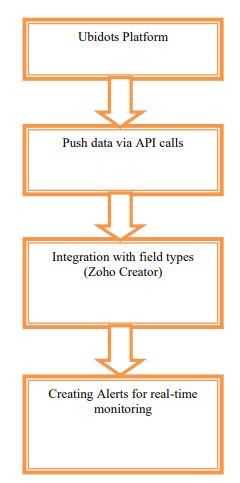
2.1. Device Installation
The ZING device is a long-range LoRaWAN temperature/humidity sensor (Fig. 3). It does not have a built-in battery, but it is powered by a 5V, 1.5A adapter. Usually, it is set up at locations that are minimally affected by events such as door opening/closing. The ZING device has been set up in the following hospital rooms/areas:
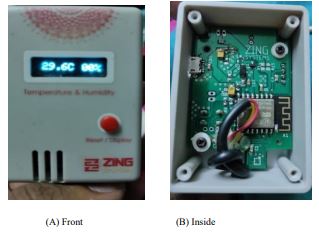
(1) UPS Ground floor
(2) UPS Utility 2nd floor
(3) Hub Ground floor
(4) Server room 4th floor
(5) Admin area 7th floor
(6) OP pharmacy Ground floor
(7) Dialysis 2nd floor
(8) Blood bank Utility 2nd floor
(9) Main Server Room
Other departments in the hospital that are not equipped with the IoT device, but are still equally monitored via manual data entry are:
(1) OT Rooms & refrigerators
(2) ICU Rooms & refrigerators
(3) Emergency Rooms & refrigerators
(4) Laboratory Rooms & refrigerators
(5) Diagnostic Areas Rooms & refrigerators
(6) Pharmacy Rooms & refrigerators
(7) Nursing Station refrigerators
(8) Kitchen refrigerators
2.2. Device Gateway
The gateway for connecting the device to the Ubidots platform is the LoRaWAN gateway. LoRaWAN defines the communication protocol and system architecture for the network, while LoRa is the physical layer that enables the long-range communication link [24]. The process is as follows:
(1) The device is connected to a power source and switched on.
(2) Then we switch to the wifi option for PC/Laptop. Once the ZING device’s signal is detected, then we connect to our PC.
(3) Next, we open the web browser and type in the IP address for accessing the gateway.
(4) Once we are logged into the gateway, we scan for any stable available WiFi source.
(5) Upon detecting the available WiFi sources, we then select the one which we think is suitable for the smooth transmission of data (Fig. 4).
2.3. Ubidots Integration
Ubidots is an IoT platform that allows innovators, industries, or individual users to prototype and scale IoT projects to production. We can use the Ubidots platform to send data to the cloud from any internet-enabled device.
When integrating the ZING device, there are a few steps involved:
(1) First, we login into your Ubidots account.
(2) Next, we go to the device page. On this page, we select the “Add device” button on the top right corner of the page.
(3) Then we can create a new blank device shell or automatically create new devices using the predefined libraries and documents indicated below.
(4) Next, we need to POST or send data to Ubidots and GET or receive data from Ubidots. This requires us to authorize a 'Token' to acquire the data to be sent from the device. We use the 'X-Auth-Token’ as a request header (which is more secure and mostly used during the production stages). To authenticate every API request during the 6-hour time limit, we need the HTTP header ‘x-bigots-apikey'. Then, a ‘variable’ for the device will be created on the specific device’s page. In our case, the variables we will be monitoring are temperature and humidity (Fig. 5 and 6).
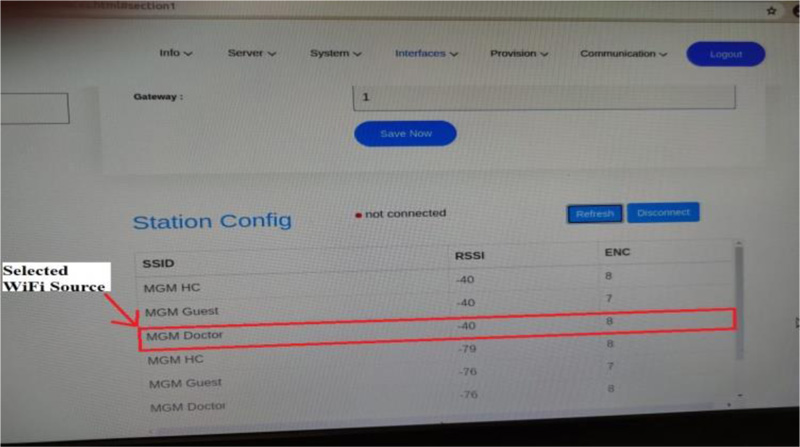
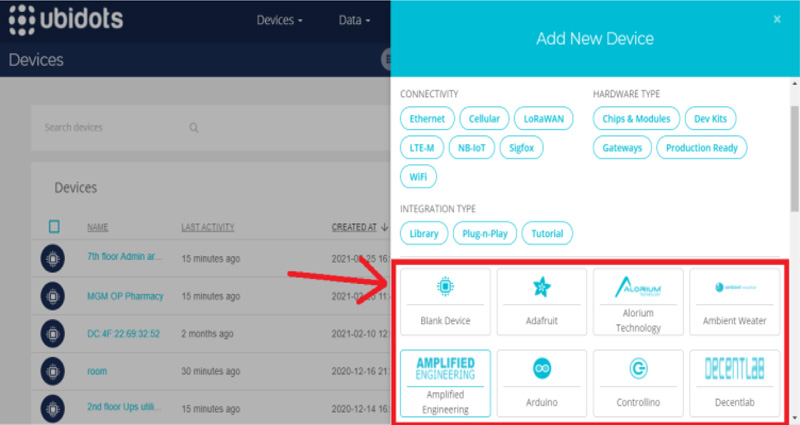

2.4. Creation of Widgets and Dashboard (Ubidots)
Since the Ubidots platform implements REST API, we need to track the daily data that is automatically posted from the device by Ubidots, and thus we also create widgets to monitor the key performance. Dashboards are created as well for an overall visualization (Fig. 7).
2.5. Creation of the Environmental Services in Zoho Creator
Zoho Creator is a platform whereby we can create different types of business applications based on the user's preference. It is a low coding platform that allows even people without any prior knowledge of coding, to easily develop apps according to their liking without the need for developers. However, developers with a knack for custom coding can also use the platform's own 'Deluge Script', which is Zoho's programming language.
In our study, we utilized both the low coding interface as well as the Deluge Script for creating workflows that will allow this platform to function as a Hybrid-IoT platform, as mentioned previously.
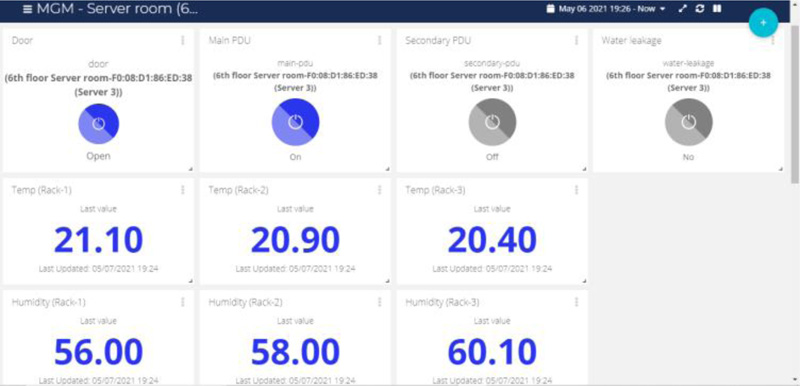
Some of the steps involved in creating this application are as follows:
(1) On the homepage, we select ‘New Application’ and then select ‘Create from Scratch’. Then we give a new name to the application.
(2) Now, we need to create a form, which will be the user interface when accessing the production application. We do this by clicking on the '+' button on the top.
(3) After creating the forms, now we need to add the field types based on our requirements. We can also change the theme of the module as per our preference for the theme selection option.
The IoT-enabled rooms for temperature and humidity monitoring, and other areas such as OT, ICU, Diagnostic Areas, etc were also created. This is so that the other departments in the hospital that did not implement any IoT device yet, can still be monitored, whereby the hospital staff can either manually enter the recorded data or directly call the data from the IoT platform, depending on the circumstances. Thus, the term 'Hybrid IoT suite'.
2.6. API Integration with Field Types in Zoho Creator
An API or Application Programming Interface is a set of programming codes that enables data transmission between one software product and another. The data transmission between solutions is done in the form of requests for processing and data delivery protocols. In this part of the work, we use to take the unique API token for each device created in Ubidots as well as the URL (using the getUrl function in Zoho Creator). This will allow for the Zoho Creator API webhooks to be able to call the data from Ubidots and display it in the specific fields of the preferred application.
2.7. Creating Alert Workflows
The final step to creating a complete real-time tracking application is to also create an alert system. This is required so that when the data being updated is either below or above the specified range of temperature/humidity, then an alert message will be sent to the different levels of management. We have created an alert workflow to send an email as well as a telegram message to the respective management.
2.7.1. Email Alert Workflow
The steps to creating an alert workflow via email are as follows:
- First, we open the Deluge Script in the Workflow tab and create an action upon submission of the form.
- Now we create the code for the email alert. We specify the temperature or humidity range so that if the data recorded varies with that of the specified range, then an email will be sent to the required email.
2.7.2. Telegram Alert Workflow
For this type of alert, we need to first create a Telegram bot separately for temperature and humidity alert using the ‘BotFather’. Next, we get the required management's telegram ID using IDBot in Telegram and finally code it into the Deluge Script editor. The successful alert systems sent in a telegram are shown in Fig. (8).
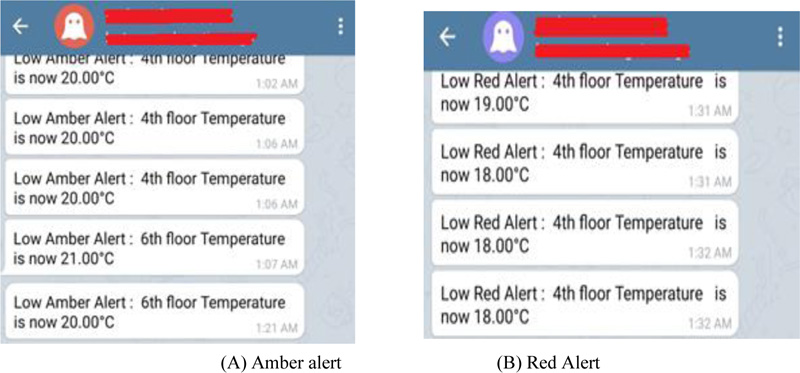
3. RESULTS AND DISCUSSION
3.1. Report Evaluation
After having provided access to the hospital officials to access this application, data has been daily recorded for the IoT-enabled rooms as well as other departments that have not implemented the ZING devices yet. The key point in this is to monitor the daily data that has been entered and updated by the respective staff. Therefore, for this purpose, we have also created reports. Reports help us to analyze the data and allow visualization through charts and dashboards. the reports developed for the storage of data are shown in Fig. (9).


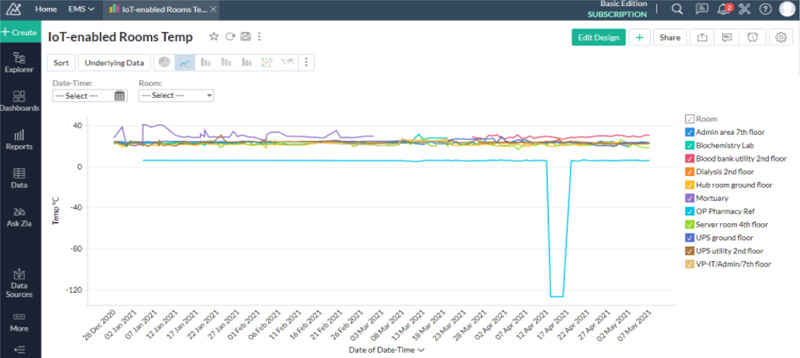
Zoho Analytics is another product under the ZOHO umbrella corporation. Using this platform, we synchronize the reports from the Zoho Creator application, and then we proceed with creating the dashboard (Fig. 10).
First, we create graphs for both the temperature and humidity parameters of the module.
Considering (Figs. 11 and 12), we can see quite a difference between the temperature and humidity graph. The temperature graph tends to show more stable lines than the humidity graph. The reason is that the temperature data more or less remain in the specified range. However, the humidity graph shows a lot of deviation as this could probably be caused due to increased moisture within a room, maybe because of a constant opening of a door or the presence of more people in the room. We can also see some of the rooms that deviate a lot from the rest of the device groups, regardless of temperature or humidity. This could be due to a power outage, whereby the graph suddenly drops as no data has been uploaded to the Ubidots platform. Sometimes if a device is disconnected for a long period, then the graph values altogether cease to display. Summary Table, on the other hand, allows us to be able to take the average, maximum, and minimum values of temperature and humidity over two months or more.
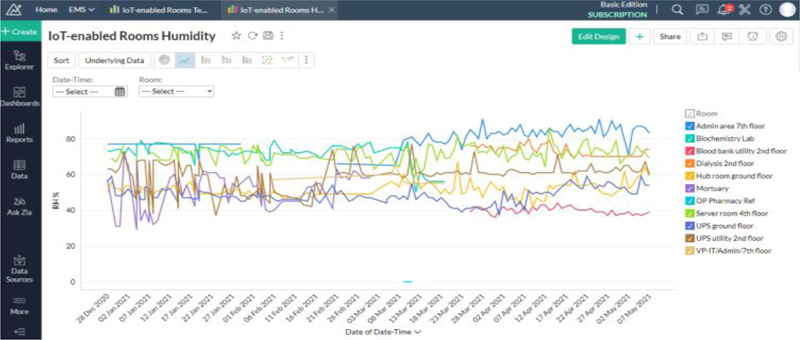
Finally, we create a dashboard that includes KPIs to visualize the automatic updating of data in Zoho Analytics. Figs. (13-16) show the result of the creation of a dashboard for the IoT-enabled rooms as well as another example of a dashboard for one of the other departments in the hospital.
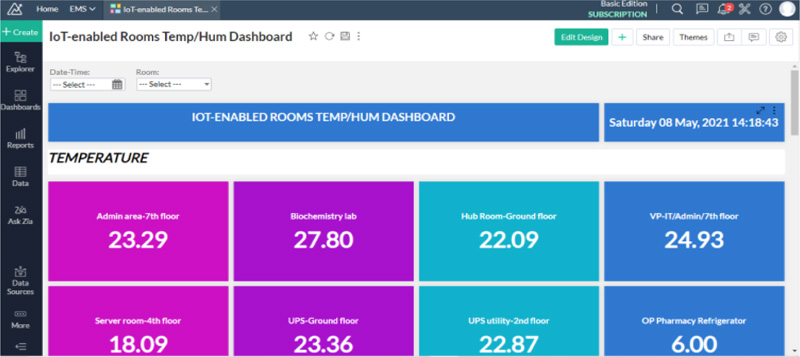
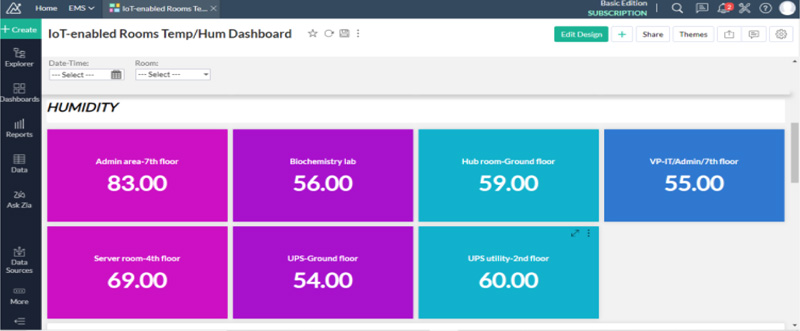
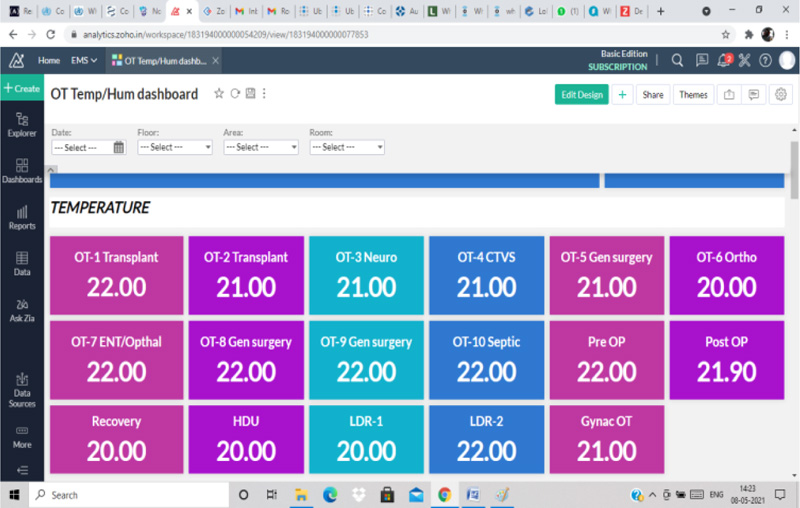
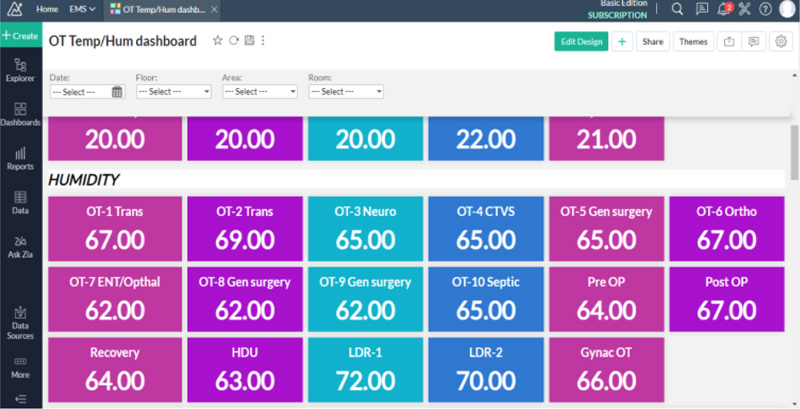
CONCLUSION
From the results of this experiment, we have observed the various data obtained for both temperature and humidity values. Upon observing the results, it can be understood that although temperature and humidity go hand in hand, however, there is a difference in the variability between them. Temperatures within a room can remain stable, however, it can be noted that the same does not apply to humidity. Certain changes in humidity in, for example a blood bank, could be due to the continuous opening of the door. If using equipment, however, like a refrigerator or freezer, temperature variance can be observed if the door to the refrigerator or freezer is kept open. As the temperature exceeds the specified range of maintenance, alarms have been set and a Bot has been configured to send a message via Telegram to the admin in charge of maintaining the environment as well as cold storage equipment temperatures to look into the matter as soon as possible. This information is vital, especially in a facility, as these subtle changes could mean the difference in the effectiveness of vaccines or medicines. Abdulrazzak et al. also asserted that monitoring is necessary for tracking any environmental changes. Although they used the DH22 Sensor unit and relayed the information captured to the Arduino IDE, however, their experimental analysis did not include IoT. Sujeeta et al. involved a similar approach in capturing the temperature and humidity data using the DH22 sensor unit and a NodeMCU for transmitting the data captured to an online platform called Fire Base Control. They were able to view the data and set the threshold value in case either temperature or humidity breached the set threshold value. Both these experiments were able to provide the base concept for this experiment, i.e. , the real-time monitoring of environmental changes using IoT. In this manner, we have deployed the ZING device (which consists of the temperature and humidity sensor as well as an inbuilt ESP8266 module for transmitting data to any online platform, which in our case was UBIDOTS) in various departments in the healthcare facility. The data taken from UBIDOTS was displayed on Zoho Creator and Zoho Analytics via API keys. KPIs were created for clarity in analysing the data. Therefore, as explained by Kelly et al., we can demonstrate the opportunities for building up healthcare systems with the help of IoT technologies.
LIST OF ABBREVIATIONS
| EM | = Environmental Monitoring |
| BM | = Building Management |
| ES | = Emergency Services |
| PIC | = Purchase and Inventory Control |
| HIS | = Hospital Information System |
| HCO | = Healthcare Organizations |
| IT | = Information Technologies |
| ICT | = Information and Communication Technologies |
| WAT | = Wearable Activity Tracking |
| IoT | = Internet of Things |
ETHICS APPROVAL AND CONSENT TO PARTICIPATE
Not applicable.
HUMAN AND ANIMAL RIGHTS
No animals/humans were used for studies that are the basis of this research.
CONSENT FOR PUBLICATION
Not applicable.
AVAILABILITY OF DATA AND MATERIALS
The data supporting the findings of the article is available in the MGM Hospital at https://www.zoho.com/analytics/ login.html.
FUNDING
None.
CONFLICT OF INTEREST
The authors declare no conflict of interest, financial or otherwise.
ACKNOWLEDGEMENTS
Declared none.


